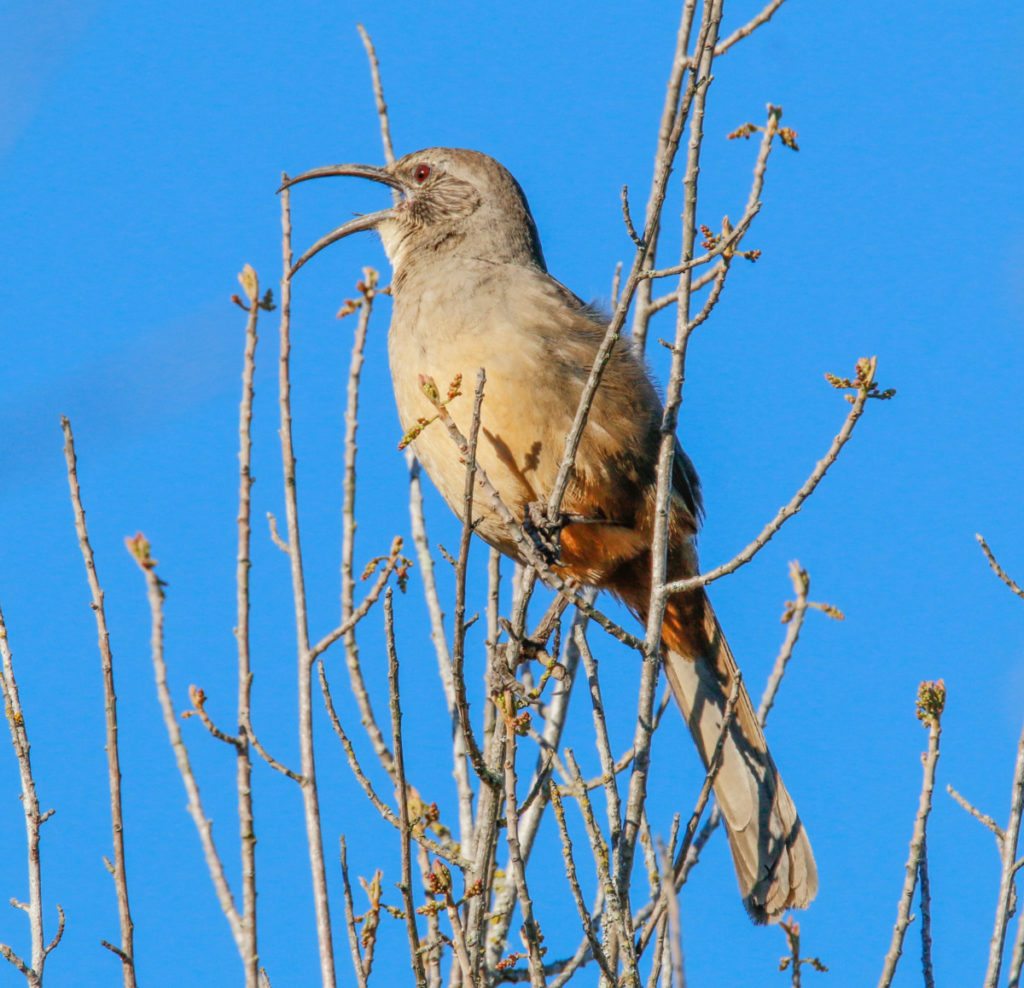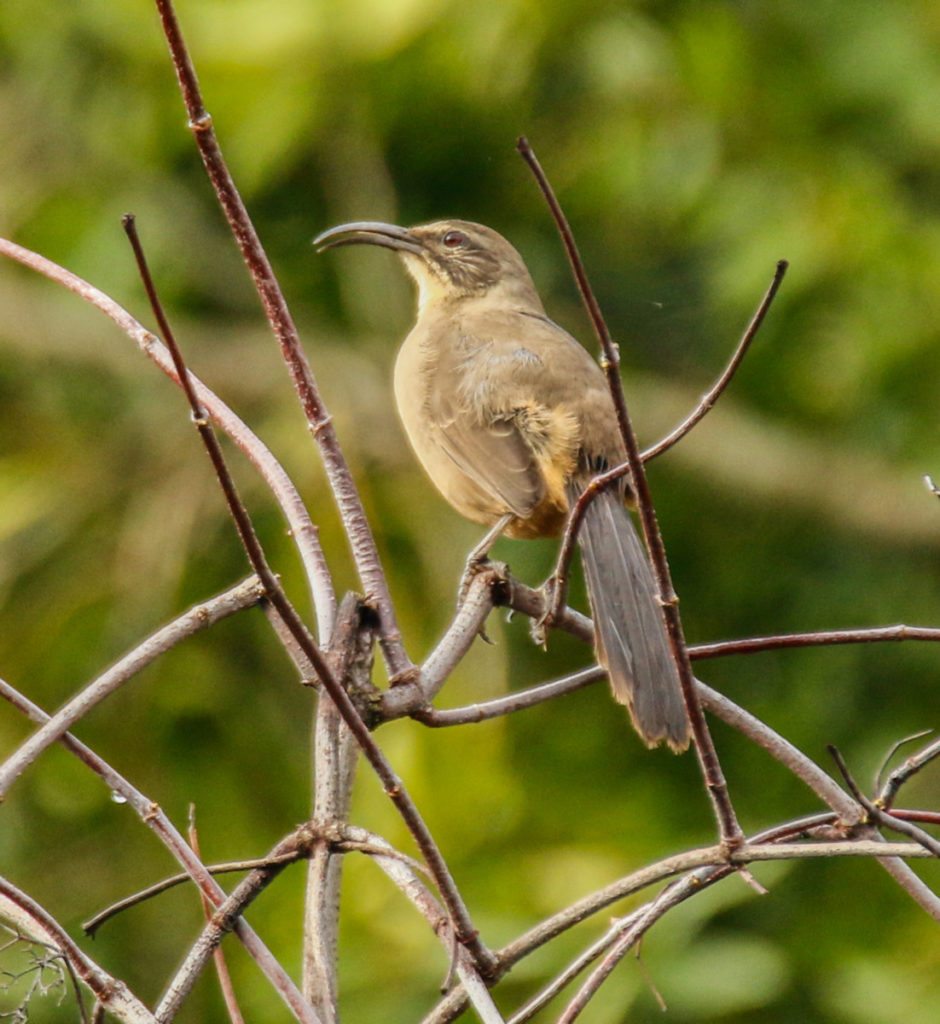California Thrasher: curved bill, complex song
By Miya Lucas
In the spring and summer, the song of the California Thrasher always puts a smile on my face. The rapid pulsing, throbbing beat within a continuous melody reminds me of a rhythmic rap song. Often lasting three to five minutes, it’s one of the more varied and complex bird songs and lacks a characteristic, repeated phrase that is easily identified with that bird.
The Cal Thrasher belongs to the Mimidae song bird family. “Mimid” means mimic in Latin, and other Mimidae include our familiar Northern Mockingbird and the Gray Catbird of the East Coast. Although the Cal Thrasher mimics a wide range of species including American Robin, House Finch, and Northern Flicker, mostly it’s known for its own complex song. One study found 2,807 phrases in a single Cal Thrasher song! Some phrases are repeated like the chorus in your favorite pop song, while others are used only once.
Although you can hear California Thrashers year round, spring and summer are when they’re most vocal. Even when they sing, it can be hard to spot them. They tend to perch on the middle or side branches of shrubs and trees rather than the top, and their brown heads, wings, and tails camouflage well in the undergrowth.

Both female and male thrashers sing. Their songs are usually used for announcing and protecting territory, and mostly sung by the males. However, if a male bird is clashing with another male who is encroaching into his territory, the female will “stand guard” and start singing until the male returns. Once the male returns, the female often stands down and stop singing.
Cal Thrashers mate for life, and both male and female help raise the young. If they have a second clutch, the female typically leaves the first brood while the male stays and continues to feed the chicks.
Males and females look similar. Juveniles have more yellow bordering their underwings than the adults. The adults have darker bills, while the juveniles’ are brownish. Juveniles’ feet are also more brown, while the adults have dark gray to black feet.
The California Thrasher’s most distinctive visual feature is its long, decurved bill, which it uses to mow through grass or leaves like a farmer using a scythe. This foraging behavior may be the source of its name – thrashing through leaves and mulch to find insects, spiders, berries, and seeds.
Cal Thrashers spend most of their life on the ground. They have strong, long legs for running in and out of bushes. When threatened, the Cal Thrasher is more apt to run than fly from danger.

I particularly like the innovative way the California Thrasher grooms itself. While other birds bathe in water or dust, Cal Thrashers take a different approach – what I call their personal ant spa treatment. They find a carpenter ant hill, stand on top, and allow the ants to crawl all over them – with formic acid secreted by the ants possibly killing any mites or lice they’re harboring.
The Cal Thrasher also preens itself in a distinctive and systematic manner. While most birds use the sides of their jaw and bill for preening, the Thrasher uses only the tip. It starts with its breast fathers, goes on to its back and wing coverts, and finally uses its toenails to preen its head and face.
As Californians, we’re lucky to have Cal Thrasher as a year-round resident, found only in the coastal chaparral and foothills of California and Baja California. It’s the largest of the eight thrasher species found in North America, 10 percent heavier than a robin and twice the weight of a mockingbird.
In the past 50 years, the California Thrasher population has declined by 35 percent, according to National Audubon’s Breeding Bird Survey. In 2016 it was included in the State of North America’s Birds Watch List because of declining habitat. The International Union for Conservation of Nature lists it as a species of least concern, yet also reports that declining habitat is an issue.
Some good places to hear the California Thrasher in the Bay Area are San Leandro Reservoir’s Valle Vista entry, Sibley Regional Park, or Tilden Regional Park, in the early spring.
Miya Lucas, an avid birder and photographer, recently completed the year-long Master Birding Class co-sponsored by Golden Gate Bird Alliance and California Academy of Sciences. She co-leads monthly field trips for Golden Gate Bird Alliance to Las Gallinas Storage Ponds in Marin County. Check our Field Trips web page to find the date of her next trip to Las Gallinas.
